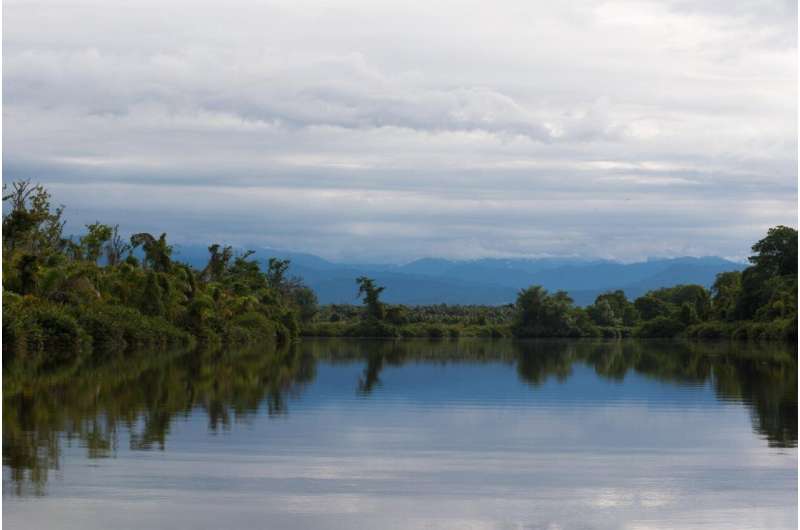Underwater manatee chatter may aid in their conservation

Listening in on manatee conversations could help restore populations of this endangered marine mammal. Each manatee has its own voice: their calls can be traced back to specific individuals, offering a way to estimate how many of them are present in a particular habitat in a given time. Researchers from the Smithsonian Tropical Research Institute (STRI) and the Universidad Tecnologica de Panama, (UTP) propose a new method for detecting these calls from underwater recordings.
Antillean manatee (Trichechus manatus manatus) populations have been continuously decreasing for a decade and are predicted to drop an additional 20% within the next two generations, according to International Union for Conservation of Nature (IUCN) criteria. There are a few reasons for this, most of which are due to human pressure, including illegal hunting, habitat degradation, boat collisions and pollution.
In order to counter this decrease, conservationists need to be able to estimate manatee numbers and understand how they use their habitat. In Panama's Bocas del Toro province, however, manatees live in turbid brackish waters, covered by aquatic vegetation, so standard visual counting methods are less than ideal.
"Estimating the manatee population in Panama is like working in total darkness: you cannot count what you cannot see," STRI marine ecologist, Hector M. Guzman, said. "We made a first attempt few years ago using a side-scan sonar within the protected wetland, which yielded good preliminary results. However, the method was not suitable for other non-navigational rivers with dense aquatic vegetation."
Although hard to sight, manatees often communicate with one another underwater, emitting whistles, squeaks and chirps to attract mates, warn their neighbors of danger or stay in touch with their offspring. With this in mind, researchers turned to sound.
"Working with a marvelous team of signal-processing specialists from the UTP, we created a new research horizon for manatees, opening the field for a continuous monitoring system of the populations based on vocalizations," Guzman said. "Now, we can identify where, when and who is there, which we ecologists need to model population size and changes in time and space."
The proposed new method for counting manatees, based on their vocalization spectrograms, was tested on a large data set of underwater recordings from the Changuinola and San San rivers in Bocas del Toro. This scheme uses the uniqueness of manatee sounds to generate individual clusters, with each cluster corresponding to a single manatee.
"This approach required the collaboration of several different specialists, and almost two years of development and analysis, to process over 375,800 two-minute audio clips from three years of continuous monitoring, to be able to successfully count and identify individual manatees from Bocas del Toro protected wetlands," said Fernando Merchan, signal-processing specialist from UTP and lead author of the publication.
The scientists found that this method offers similar estimates of manatee counts than those encountered in previous studies, through different approaches. By linking individual vocalizations to specific manatees, this underwater acoustic-monitoring technique may become a valuable tool for ecologists to infer the seasonal presence of manatees in certain sites.
With the support of the National Secretariat for Science, Technology and Innovation of Panama (SENACYT), this method will be further extended to include wetlands in the Ngabe-Bugle indigenous reserve in Panama, and it could potentially be implemented in a network of manatee habitats in the region, such as in Mexico, Belize and Colombia, allowing for a greater comprehension of manatees' migration patterns and regional population changes.
Future research projects, also financed by SENACYT, involve the development of a real-time detection and alert system that could continuously monitor the rivers and wetlands to prevent boat collisions, a substantial cause of manatee deaths. The team is also interested in developing advanced classification methods that would identify the sex and age range of manatees from their individual vocalizations, contributing to a better understanding of their habitat use for mating and nursing, and, ultimately, helping to inform conservation policies.
More information: Fernando Merchan et al, Detection and identification of manatee individual vocalizations in Panamanian wetlands using spectrogram clustering, The Journal of the Acoustical Society of America (2019). DOI: 10.1121/1.5126504
Journal information: Journal of the Acoustical Society of America
Provided by Smithsonian Tropical Research Institute



















